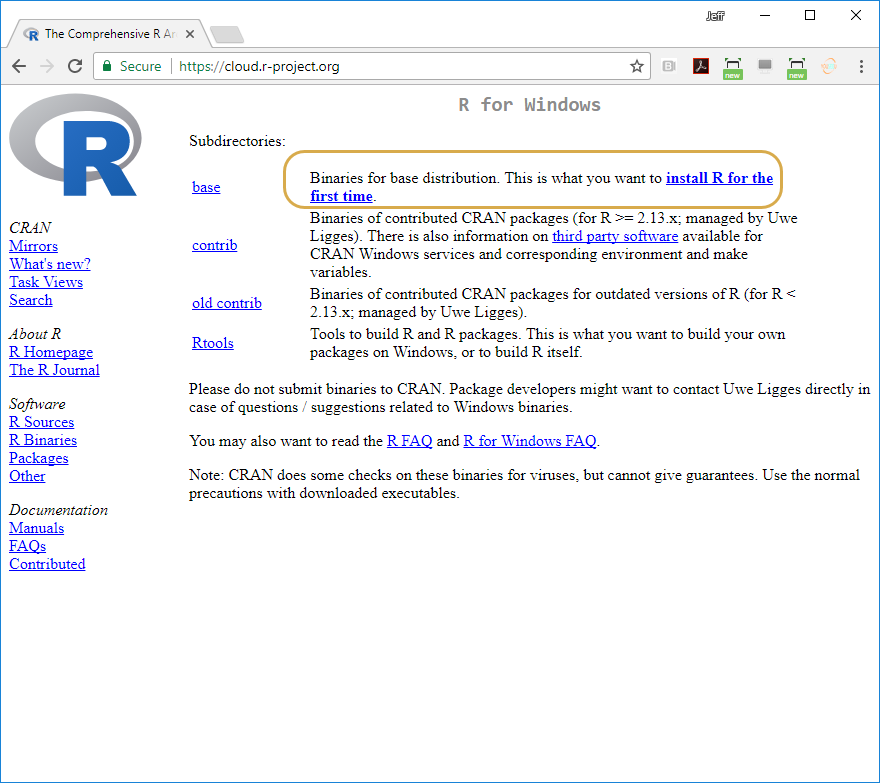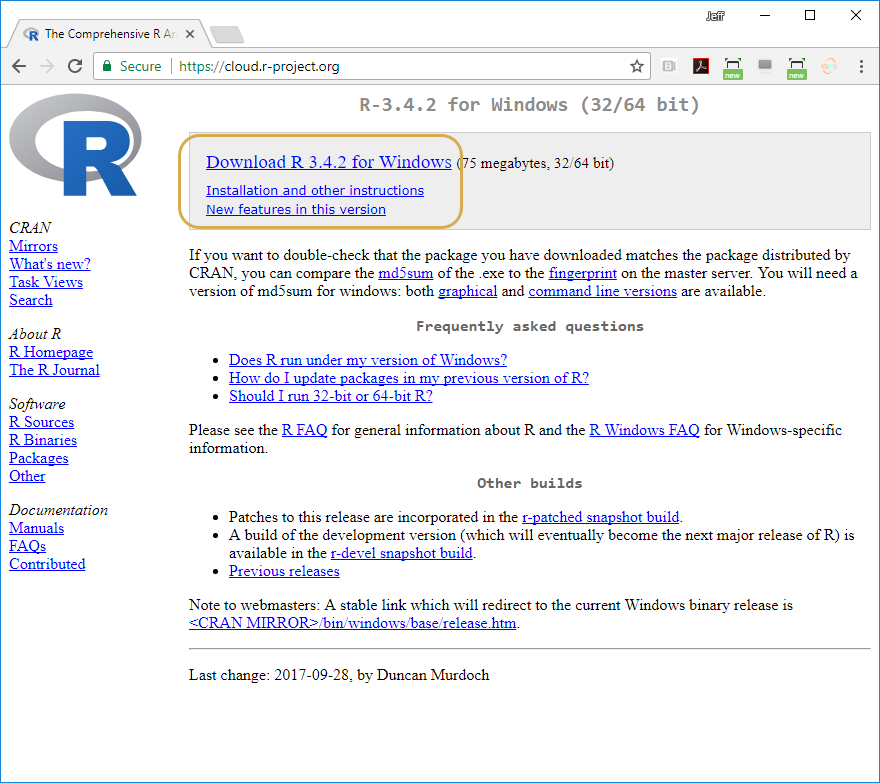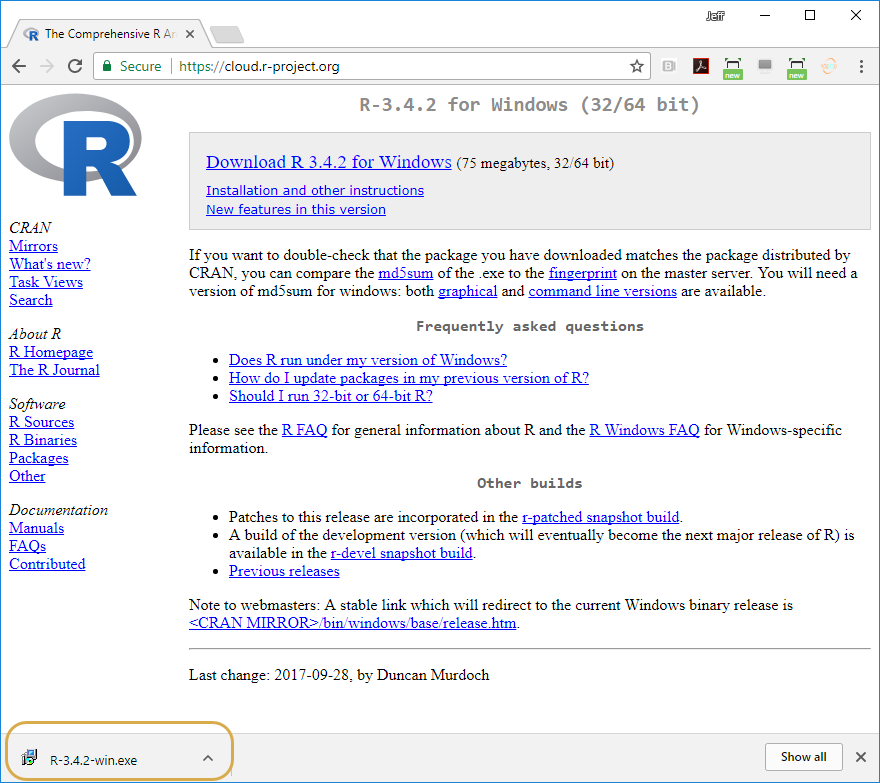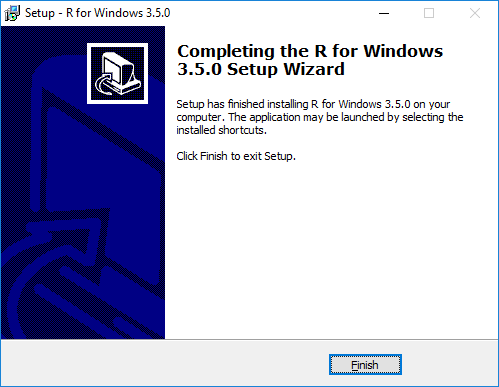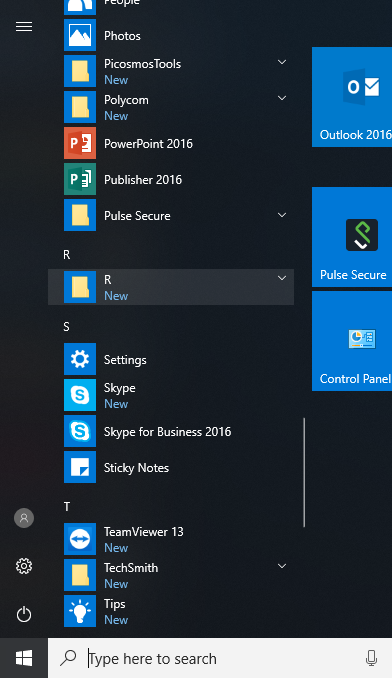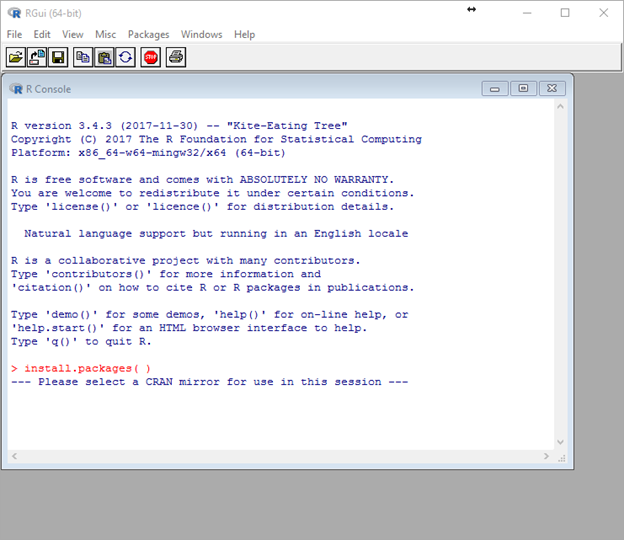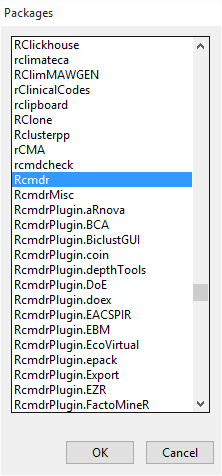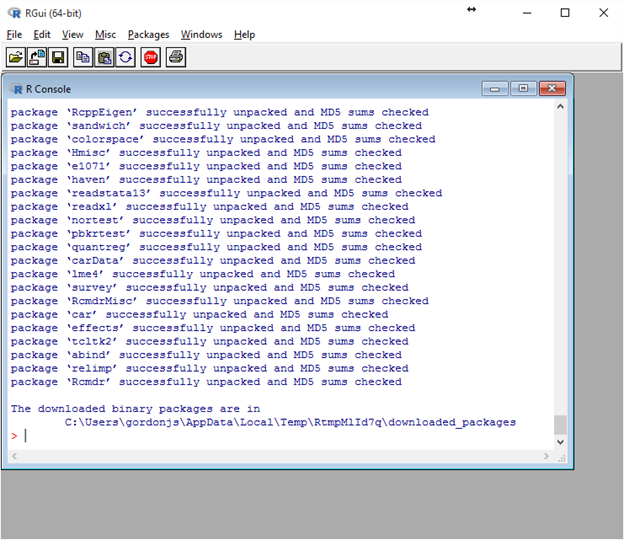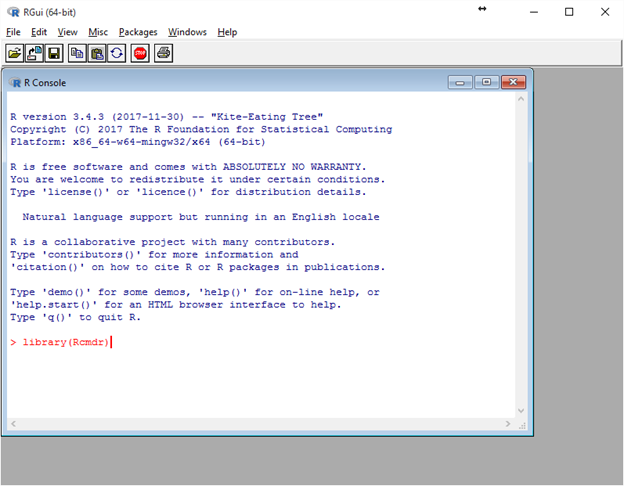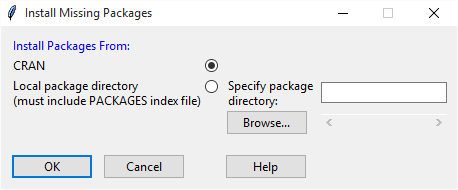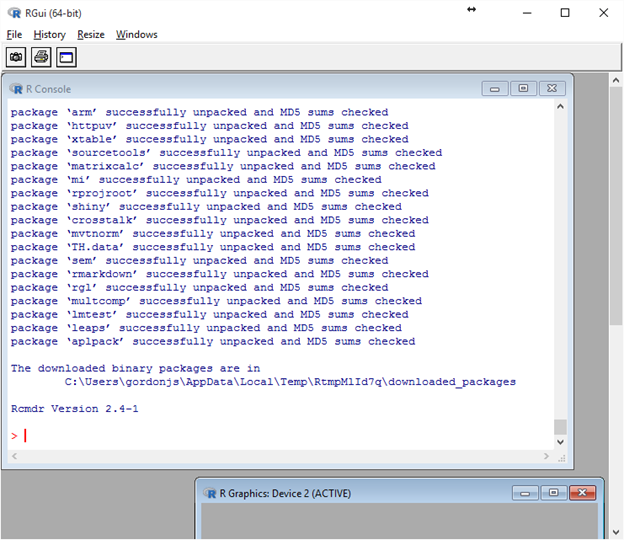- Installing R (this is done first but only once)
- Installing R-Commander (must be done AFTER R is installed but only once)
- Starting R-Commander (this is done every time you want to run it)
- Links to Using R-Commander (sites that explain how to use R-Commander)
Installing R
R-Commander is a graphical user interface for R, a statistical environment comparable to SPSS or SAS. R and R-Commander are shareware applications. It is going to be used in the VUSN statistics class starting Spring of 2019.
The first step requires the installation of R. After that, we will install R-Commander on top of R.
Go here: https://cloud.r-project.org/
Click on the download for the OS on your computer. For this example we will download the Windows version.
Click the link “install R for the first time”.
Click the link “Download R 3.4.2 for Windows”. (NOTE: the version may be higher by the time you read this so select the highest production version available.) You may also want to download the link “Installation and other instructions” as well as “new features in this version”.
Click “Save” and remember where it saved it. (In the case below it is in the Downloads folder. In your environment that may be different.)
If you want to install it now you may click the “r-3.4.2-win.exe” button at the bottom of the browser (I am using Chrome). If you are going to install it later, go to where you saved and and click to run the executable.
Go through the standard setup wizard.You will now see 7 or 8 screens . Just click OK, Next >, or Finished for all of them until you get to this screen.
When you click Finish, the installation of R is complete. You should see it in the applications menu when you click the Windows button in the lower right corner of your screen under “All apps”.
The next step is to install R-Commander. That will be the graphical user interface we will use for R.
Installing R-Commander
We will install R-Commander from inside of R. Launch the 64 bit version of R by selecting it from the desktop or from the applications menu.
Click the down chevron to open the folder and select the correct version of R. Unless you are informed by your instructor otherwise, ALWAYS use the 64 bit version (instead of the 32 bit i386 version) since it runs a bit faster.
You will see this:
Put the following in after the forward caret. You may copy/paste it from here.
install.packages( )
So it will look like this: (it will automatically print in red). Then hit the Enter key on the keyboard.
You will be prompted to select a CRAN mirror for use in this session:
You will see the following window. Use USA (CA1), it is the safest, click it and click OK.
That will bring up the Packages window. Scroll down and look for Rcmdr. (It is about 2/3s of the way down.). Click it then click OK
Select the default on this window (Yes).
Click “Yes”.
The download process commences. Give it time, it takes a while. You will see lots things flash on your screen and you will see lines appear in the R Console. Periodically it will stop and look like it is doing nothing. Just let it cook; it is doing a lot behind the scenes. This could take up to 5 minutes. When it reaches this screen, it is fully installed. Notice the caret prompt.
From the caret type in: You may copy/paste from here.
library(Rcmdr)
You may be prompted to install additional packages. While the aren’t required you may just go ahead and do so. Click Yes.
Click OK
It will then continue the install process in the RGui window.
After it is through installing close Rgui by clicking the X (standard windows close) location.
Starting R-Commander
Open R. From the prompt type the following (you may copy/paste from here)
library(Rcmdr)
This launches R-Commander. In this window, you can begin selecting statistical things to do.
Links on R-Commander
Here are some links to pdf files that explain how to use R-Commander
https://cran.r-project.org/doc/contrib/Karp-Rcommander-intro.pdf
http://stellmack.psych.umn.edu/sites/g/files/pua2461/f/media/_the_rcmdr_guide_.pdf
JSG:rev022818

